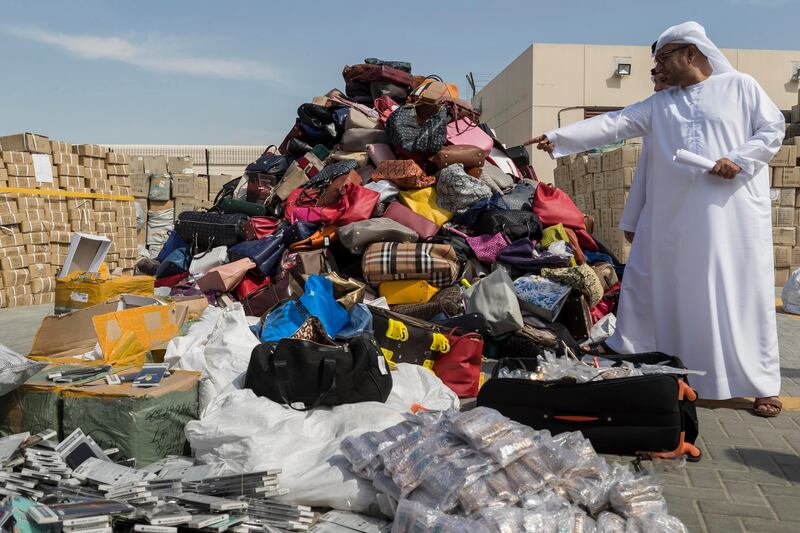Counterfeiting dates back to the sixth century BC with the introduction of physical currency, when Athens became the first society to adopt anti-counterfeit legislation. Since that period, history has followed a pattern – counterfeiters push the bounds of what is possible and force lawmakers to keep up with new ways to verify authenticity.
The methods and instruments that counterfeiters use in the digital age have only further developed. Now, they manipulate advanced techniques to make goods that are difficult to identify and can enter even the most carefully guarded stores. However, whereas the ancient Greeks fought back with legislation, today's businesses rely on smart technology to fight fakes.
Despite its long history, counterfeiting is an intractable problem for many businesses. Companies spend plenty of money and resources to stop the spread of spurious goods. If a product masquerades as its real version, companies and consumers can both be harmed and counterfeiting can have a substantial financial impact on a sector. According to the latest "Economic Impacts of Counterfeiting and Piracy" assessment, published by the International Chamber of Commerce, counterfeiting could be worth $2.3 trillion by 2022.
Along with these financial concerns, brands must also consider the reputational damage that fakes can create. Brands have a huge responsibility when it comes to ethics. With companies' reputations on the line, digital innovations enable them to access a whole new set of tools to fight fakes.
Today, counterfeiters are ever more skilled at obtaining materials and combining them with intricate designs. So distinguishing real from fake is more difficult today than it has been in the past. With products such as printer ink, adulteration can be a problem. Forgers alter chemical compositions to create less effective or even harmful knock-offs. Given this level of sophistication, it is obsolete to try and manually identify fakes from originals.
There is hope though to combat this menace.
Digital authenticity labels and improved image processing are helping to turn the tables. These labels make use of unique digital identifiers, such as "cryptographic hashes", which can be verified only by a backend database. Following examination, modern image processing – frequently in the form of a smartphone app – is used to validate the digital markers without the need for human intervention. Printed labels include elements like holographs and QR codes to facilitate verification. This technology goes a long way. It allows customers to check products online and be satisfied that they have bought the real thing.
Labelling also helps in accurately tracking items through the stages of manufacturing, distribution and shipping. This is especially useful for channel partners and distributors that frequently connect manufacturers with end users. The process of tracking and tracing requires a system that can handle enormous data streams in real time. If effective systems are not in place, counterfeiters are at an advantage, which results in significant costs for the industry.
According to Imaging Supplies Coalition, a non-profit trade association, the global industry for counterfeit printer cartridges is worth more than $3 billion per year. Which means businesses need to ensure that their track-and-trace systems are in place even for the future.
Despite the fact that the top anti-counterfeit programmes will try to discover fakes before they appear on websites, the coronavirus pandemic has made it difficult to conduct investigations in person.
Due to restrictions, health concerns, travel limitations and limited resources, tracking counterfeit items has been a challenge. To overcome it, companies – now more than ever – need to adopt procedures that protect their brands. And all parties involved, from manufacturers to distributors to retailers, need to work together.
Thankfully, big data and advanced analytics help in this battle, and AI plays a key part. By combining aspects such as neural networks and video analytics, AI aids anti-counterfeiting operations by detecting even the most complex physical alterations to something like toner ink. In the offline world, the same tactics assist investigators in locating unlawful stock.
Despite the fact that history tends to repeat itself, digital anti-counterfeiting technology is the tool necessary to fight counterfeits. It is, however, vital to ensure congruence among stakeholders. A combined effort to recognise and eliminate fraudulent listings and spurious products can be an effective strategy.
By working closely with local and international law enforcement officials, in the past five years, HP has assisted in the seizure of over 12 million counterfeit items, including cartridges, hardware, products and components in more than 60 countries across Europe, the Middle East and Africa. The company also helps detect and dismantle illegal operations that produce fake printing components and conducts raids where counterfeit products are stored, besides conducting audits and inspections of partners’ stocks or suspicious deliveries for customers.
Given the sophistication and prevalence of counterfeiting globally, and despite the best efforts of the law, it is essential that consumers stay alert, buy products from authentic dealers and use track-and-trace technologies. It will go a long way.
Vishnu Taimni is managing director at HP Middle East





